AUTHOR The Ecoventura Team

THE LUX LIFE (RELAIS & CHATEAUX)
QUIZ TIME – How much do you really know about the Galapagos?
Around six hundred miles west of Ecuador, in the Pacific Ocean, lies the remote Galapagos Archipelago. It is a one-off – an extraordinary world that has captivated visitors for centuries. Formed by volcanic eruptions and left untouched for thousands of years, the islands are renowned for their remarkably unique biodiversity and fearless wildlife; creatures that inspired Darwin’s theories of evolution following his visit in 1835. This pristine ecosystem was declared the world’s first UNESCO World Heritage Site in 1978 and a UNESCO Biosphere Reserve in 1984.
But you know all of this, right? So why not test your knowledge and try your hand at our quiz… you might be surprised at some of the answers! Correct answers are separated from their questions by an image, which may or may not have anything to do with the question itself – we don’t want to go giving away the answer now do we?
Who first discovered the Galapagos Islands?
1. Charles Darwin
2. Tomás Berlanga
3. Herman Melville
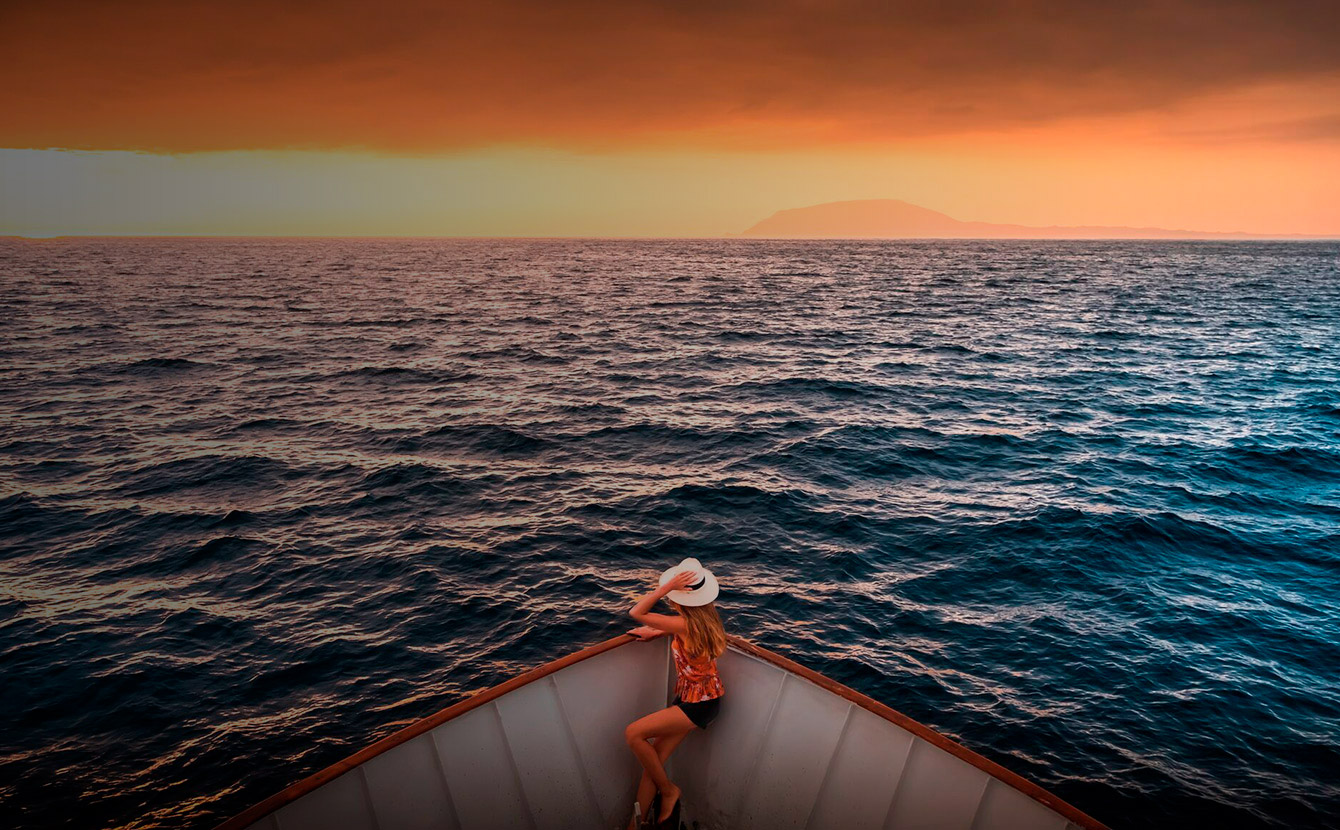
ANSWER
2. Tomás Berlanga
The Galapagos Islands were officially discovered by chance in 1535 by the Bishop of Panama, Tomás Berlanga. He was instructed to sail from Panama to Peru in February 1535 by Spanish king Charles V, but the strong ocean current blew him off course to the Galapagos Islands. Berlanga was unimpressed with his find, describing the bleak, volcanic archipelago, in a letter to the king of Spain as “dross, worthless, because it has not the power of raising a little grass, but only some thistles.”
Charles Darwin spent five weeks in the Galapagos Islands in 1835, arriving on HMS Beagle in September as part of a surveying expedition in South America and beyond. 24 years later, in 1859, Darwin published On the Origin of Species – his book that changed the way we view the world and explained evolutionary change by natural selection. Darwin wrote: “the natural history of this archipelago is very remarkable: it seems to be a little world within itself”.
Herman Melville was a whaleman who visited the archipelago in 1841 and wrote of the islands in ten “sketches” named The Encantadas, or Enchanted Isles. His best known work is Moby-Dick.
Who captained Darwin’s voyage on the Beagle?
1. Captain James Cook
2. Sir Francis Drake
3. Captain Robert Fitzroy

ANSWER
3. Captain Robert Fitzroy
Robert Fitzroy was a British naval officer who captained the Beagle on two of its expeditions; Darwin accompanied him on the second of these. In a remarkable career, Fitzroy became the first person to pass the British navy’s officer course with full marks, and was given the captaincy of the Beagle at just 23 years of age. He later became a member of parliament for the British city of Durham, Governor of New Zealand, founded Britain’s Met Office and invented the weather forecast.
The Galapagos Islands boast the highest levels of endemism in the world – true or false?
1. True
2. False

ANSWER
1. True
Around 97% of the Galapagos Islands’ reptiles and land mammals, 80% of its land birds and over 30% of its plants are found nowhere else on earth. More than 20% of the marine species in Galapagos are also endemic.
Endemic mammals include whales, dolphins, sea lions and fur seals, while endemic birds include albatrosses, cormorants and penguins. Rare sharks, sea turtles, rays and tropical fish swim in the waters.
How many ocean currents converge at the Galapagos archipelago?
1. 1
2. 3
3. 5
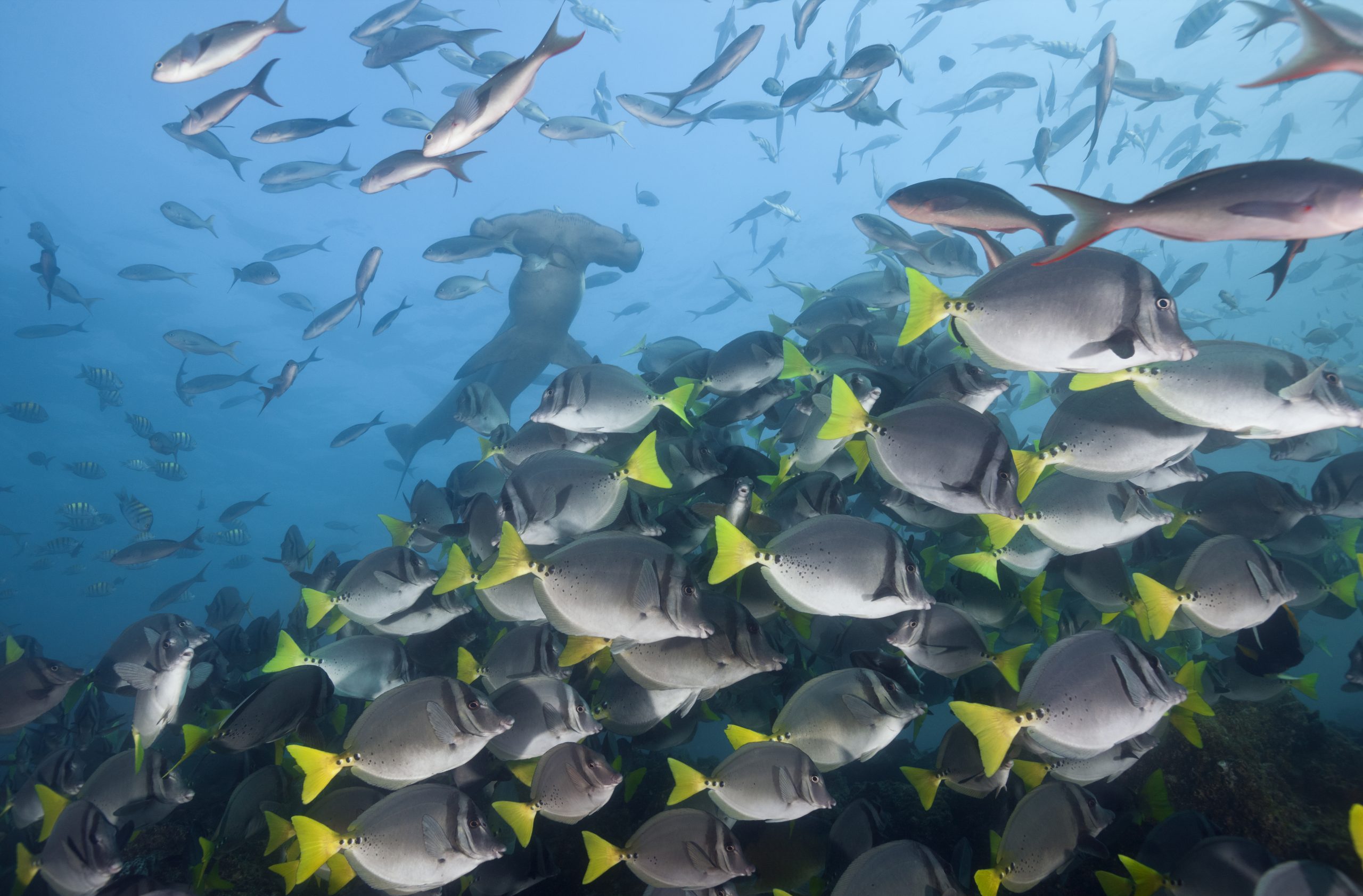
ANSWER
3. 5 ocean currents
The Galapagos Islands are located at the confluence of five ocean currents: The Cromwell, Humboldt, Panama, North and South Equatorial currents. The result of these colliding currents is a nutrient-rich environment of varying water temperatures and changeable tides, which is a large reason for the incredible marine life that inhabits the waters of the Galapagos.
When did a volcano last erupt on the Galapagos?
1. N/A – there are no volcanoes in the Galapagos
2. 1834
3. 2022

ANSWER
3. January 6, 2022
The Galapagos Islands were formed by underwater volcanic eruptions – they are located where three tectonic plates, the Pacific, Cocos and Nazca – meet. Today, numerous active volcanoes remain. The last volcano to erupt was Isabela Island’s Wolf Volcano – the tallest mountain in the archipelago – in 2022. A cloud of ash and gas soared 3,793 meters (12,444 feet) above sea level following the eruption.
What is El Soplador?
1. A volcano
2. A blow hole
3. A breed of whale

ANSWER
2. A blow hole
El Soplador is the name of a blow hole found at Punta Suarez on the south coast of Española Island. The rocks that give way to the Pacific Ocean were forced apart over time by a volcanic fissure and, as waves crash in to the cliffs through a hidden network of underwater caves and crevices, water gushes into the fissure. At high tide the pressure of the incoming waves creates a blow hole and water erupts in spectacular fashion, shooting up to 30 meters into the air. The blow hole is a popular tourist spot and can be reached on foot by following various trails across the islands. Sally Lightfoot Crabs frequently arrive at the site to dampen their gills beneath the salty spray and feed on algae found on the rocks. If conditions are right and the sun is out, visitors may see a rainbow appear as the rays beam through the spray.
Where in the Galapagos will you find Post Office Bay?
1. Floreana Island
2. Santa Cruz
3. San Cristobal

ANSWER
1. Floreana Island
The world’s most unusual post box dates back to 1793 and is located in a bay on Floreana Island. Homesick whalers began communicating with their loved ones in the late 18th century using a simple wooden barrel positioned next to the beach. They would leave letters for sailors from other ships bound for home to deliver by hand. The tradition lives on and visitors to Post Office Bay still drop postcards and notes into the barrel in the hope that future visitors will sort through them and deliver them safely to their designated address once they return home.
What percentage of the Galapagos landmass is a national park?
1. 11%
2. 79%
3. 97%

ANSWER
3. 97%
An impressive 97% of the Galapagos landmass qualifies as a national park. Established in 1959, Galapagos National Park, Ecuador’s first national park, protects over 3,000 square miles of islands and islets, while the Galapagos Marine Reserve protects an immense 50,000 square miles of ocean surrounding the islands. The Galapagos was the first ever location to be recognized as a World Heritage Natural Site by UNESCO.
How many species of finch are found on the Galapagos Islands?
1. 7
2. 13
3. 18

ANSWER
2. 13
There are a total of 13 species of finch endemic to the archipelago. Darwin spent five weeks studying the island’s birds, concluding that all 13 originally evolved from a single species. Darwin’s Finches played a central role in his theories on evolution and can be readily spotted throughout the Galapagos today. Differences between the species are small, but they display noticeable variations in body size and shape, plumage, beak shape and behavior. It is believed that the birds may initially have arrived on the islands after being blown across by strong winds. The birds subsequently changed and adapted to survive in their unique environments.
For how long can the Giant Galapagos Tortoise survive without food or water?
1. 3 months
2. 1 year
3. 13 days

ANSWER
2. 1 year
Weighing in at a hefty 270kg, with a lifespan of around 150 years, the giant Galapagos Tortoise has adapted to exist for months without food or water. Sadly, this distinctive adaptation has also been responsible for the dramatic reduction in tortoise numbers over the centuries. Owing to their incredible ability to survive for months – up to a year – without food or water, thousands of tortoises were captured and transported on board ships as a source of fresh meat and protein for sailors on long voyages, resulting in the extinction of several subspecies.
Penguins do not live north of the Equator – true or false?
1. True
2. False
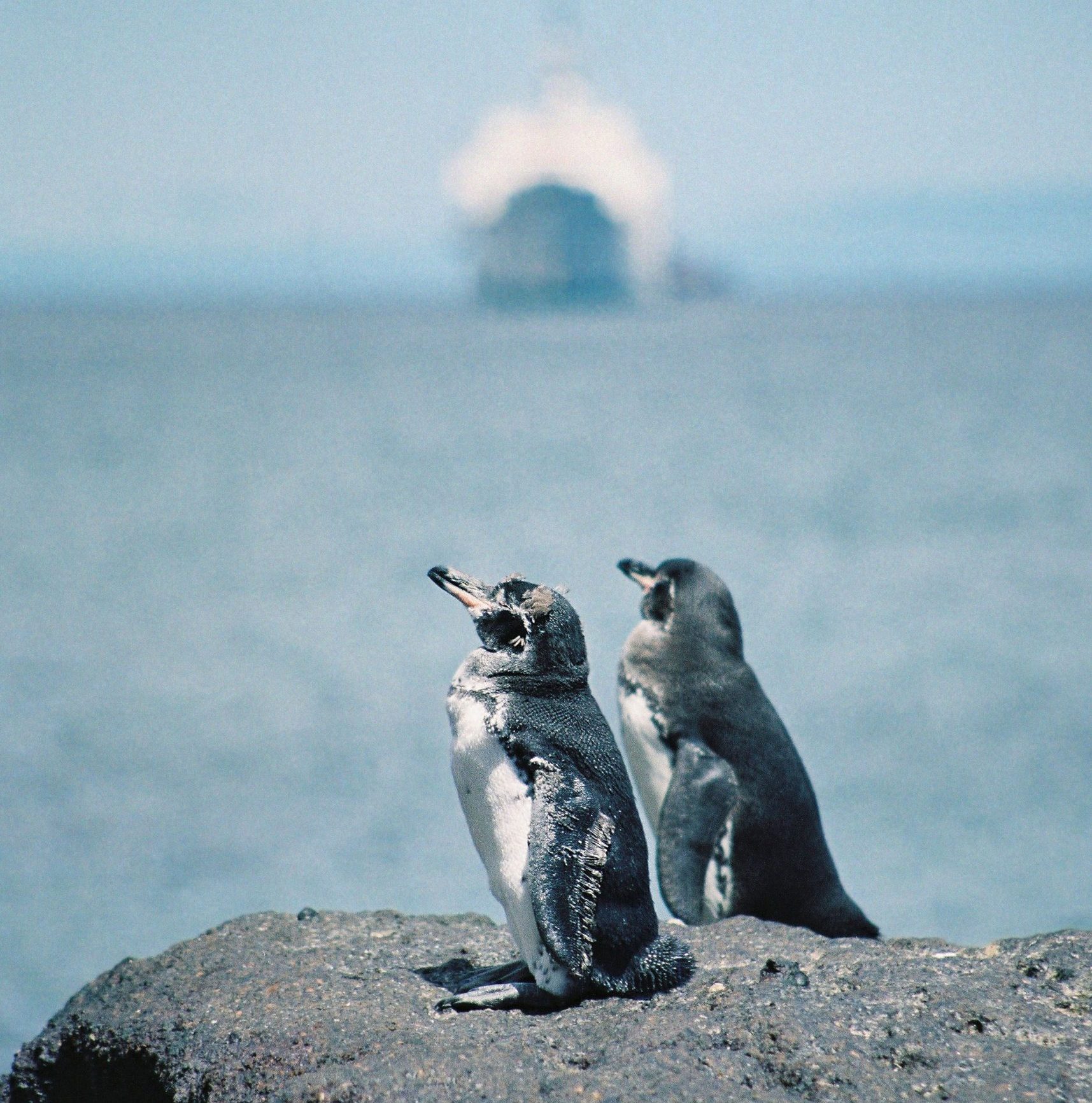
ANSWER
2. False!
While penguins are usually associated with the chillier reaches of the Antarctic and Southern Ocean, there is one breed of penguin that is endemic to the Galapagos. It’s the world’s most northerly penguin and the only type that lives north of the equator. It’s quite something to be snorkeling beside tropical fish and sea lion one moment and to spy a little penguin shooting past you the next. These cave dwelling creatures are the second smallest species of penguin and they thrive in the tropical Ecuadorian environment and the cooler, nutrient-rich waters delivered by the Humboldt Current, which flows north from Antarctica.
What is the most common marine mammal in the Galapagos archipelago?
1. Fur seal
2. Sea lion
3. Common dolphin

ANSWER
2. Sea lion
Sea lions are prolific – the most common marine mammal in the archipelago. They are the largest endemic land animal in the Galapagos and very sociable creatures – visitors will often see them lolling on the sand or swimming close to the shore. Fur seals are less common and tend to stick to more secluded spots. At first glance, sea lions and fur seals appear to be similar, but the beady eyed observer knows that fur seals are smaller, with bulgier eyes, larger flippers and thicker skins and coats. Sea lions, on the other hand, have visible ear folds and more elongated front flippers that allow them to propel themselves on land. They are also more sociable, gathering in large groups on beaches and waterfronts throughout the Galapagos – you cannot miss them!
Who was/were the first human resident(s) of the Galapagos Islands?
1. Indigenous Pacific Islanders, related to the Polynesians of Easter Island
2. Patrick Watkins, a drunk Irish sailor
3. Edward Teach, better known as the pirate Blackbeard
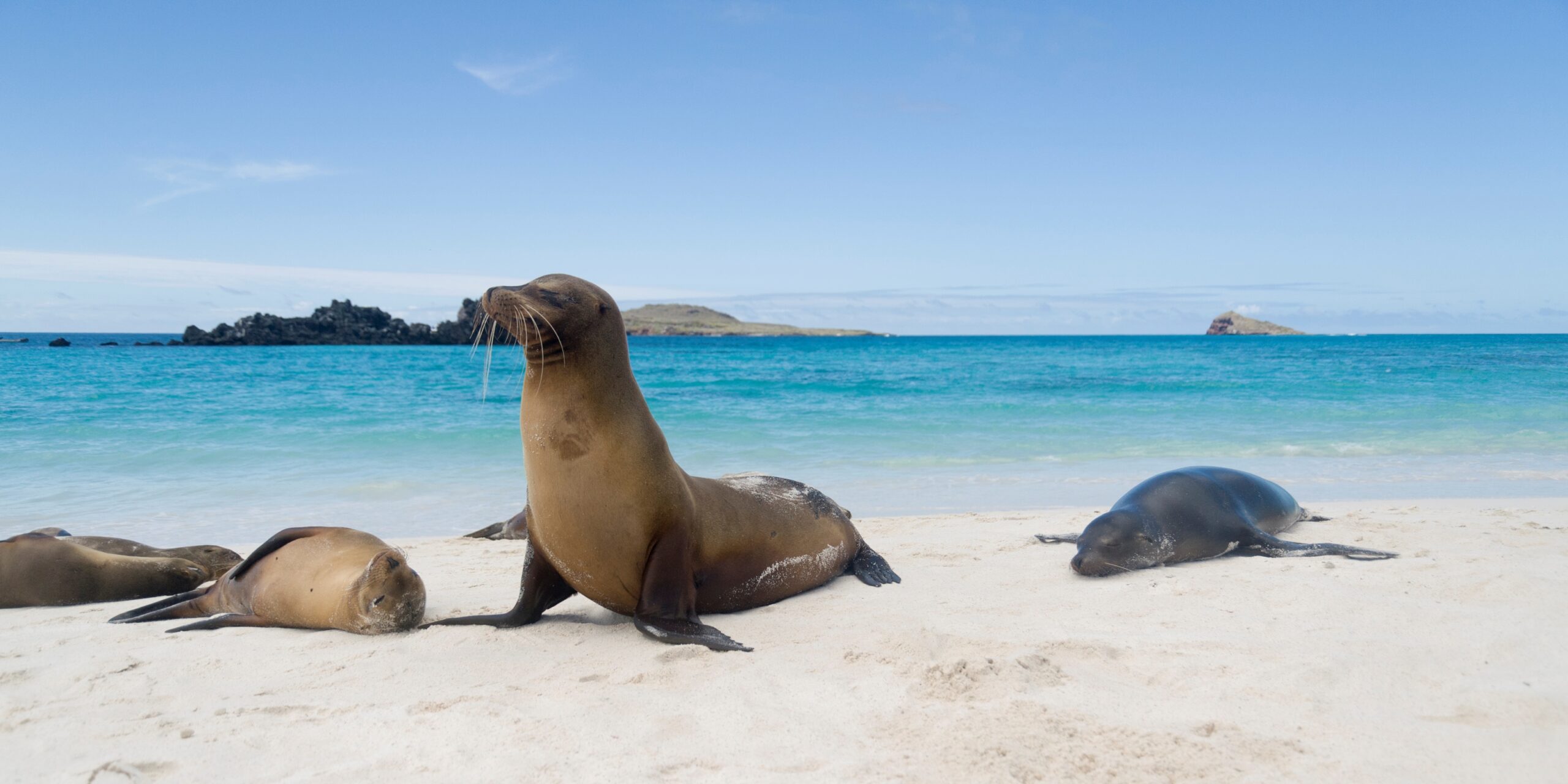
ANSWER
2. Patrick Watkins, a drunk Irish sailor
Patrick Watkins was an Irish sailor who was marooned on Floreana Island in 1807. He lived there for 2 years, surviving by hunting the local wildlife and growing his own vegetables, which he would trade with passing whalers for rum. He thus became the Islands’ first official resident, and appears to have spent much of his time there drunk. He eventually escaped by stealing a longboat from a whaling ship and sailing to Guayaquil on mainland Ecuador.
There is no evidence of an indigenous population inhabiting the islands as occurred in Easter Island and other islands across the Pacific. Pirates were known to visit the Galapagos and use it as a hideout from which to attack Spanish galleons carrying gold and silver from the Americas back to Spain, although they are not believed to have settled permanently.
How many species of Booby birds inhabit the Galapagos Islands?
1. 2
2. 3
3. 6

ANSWER
2. 3
The Galapagos is home to three of the world’s six species of booby. These much loved birds belong to the gannet group and are distinguishable by their color. The smallest is the tree and bush-dwelling red-footed booby, an agile, slim-winged seabird which proudly parades around on its vivid red feet when attempting to attract a mate. The blue-footed booby takes full advantage of its striking blue feet to perform a comical courtship dance, while the largest of the three, the Nazca booby, is known for its dazzling white plumage. Like its red and blue-footed cousins, the nazca also struts around potential mates performing an amusing courtship dance. The blue-footed and nazca boobies nest on the ground, and are found on and around many of the trails across the islands.
The name booby originates from the Spanish word bobo meaning silly, named as such by the first Spaniards to arrive on the islands who were intrigued by the boobies’ unique, clumsy mating rituals. It is thought that red-footed boobies’ feet turn red when they are mature enough for a mate, while their blue-footed cousins’ feet are the color they are due to the higher concentration of carotenoid pigments in their diet.
Which constellations of stars are visible from the Galapagos Islands?
1. Northern Hemisphere
2. Southern Hemisphere
3. Both the Northern and the Southern Hemispheres

ANSWER
3. Both the Northern and the Southern Hemispheres
Most stargazers will never experience the spectacle of being able to see the constellations of both the Northern and Southern Hemispheres at the same time. But visitors to the Galapagos have the pick of both hemispheres, thanks to the fact that the archipelago straddles the equator. This is the spot if you want to see the Southern Cross and North Star in one outing. There is minimal light pollution too, given the remoteness of the islands, making for a dazzling starlight display across the vast expanse of sky.
What is the permanent (human) population of the Galapagos Islands?
1. 25,000
2. 5,000
3. 15,000

ANSWER
1. 25,000
Although 97% of the Galapagos land mass is a protected national park, there is a permanent population of over 25,000 who live permanently on five of the 13 main islands. Locals are spread between Baltra, Santa Cruz, San Cristobal, Isabela, and Floreana. The largest community of 12,000 is found in Puerto Ayora, on Santa Cruz Island. The first known Galapagos inhabitant was an Irish sailor called Patrick Watkins who became stranded on Floreana from 1807-1809. He hunted the local wildlife and grew his own vegetables, further sustaining himself with rum procured from passing whalers and merchant ships.
What is the name of the world’s only swimming lizard?
1. Lava lizard
2. Marine iguana
3. Galapagos gecko
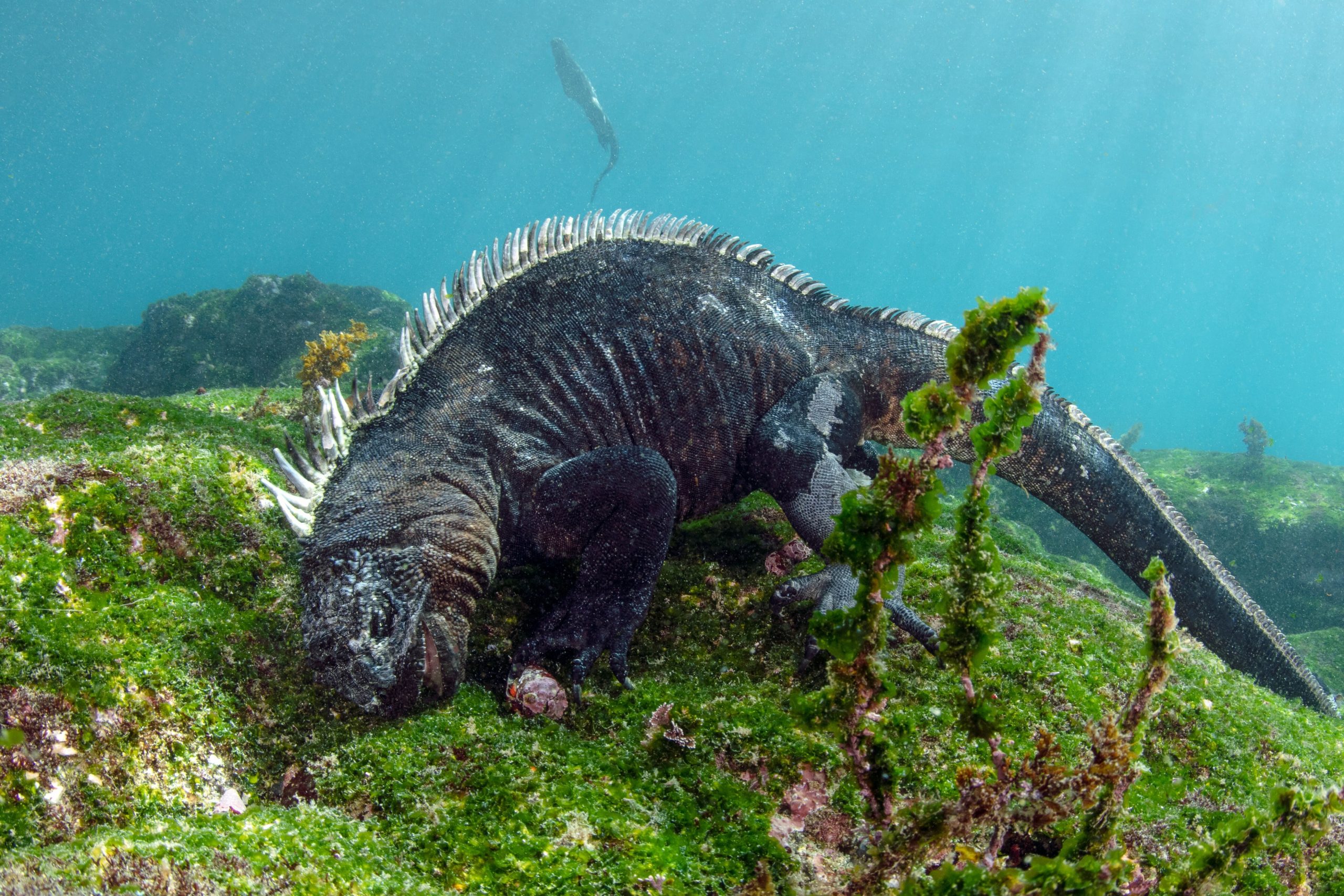
ANSWER
2. Marine iguana
A unique set of evolutionary and geographical features have made it possible for the flat-tailed, spiky-headed Galapagos marine iguana to swim and hunt for food in the sea – the only species of lizard with the ability to do so. These large, harmless herbivores were described by Darwin as ‘hideous’, but they were very important in allowing the British naturalist to develop his theory of evolution by natural selection. They live in colonies on the rocky shorelines of most of the islands and can dive up to 20 meters to feed on algae under the waves. They have a special nasal gland that allows them to “sneeze” out excess salt collected during their time in the sea.
Why is the Galapagos Cormorant flightless?
1. It has no wings
2. It has no predators
3. It is idle by nature

ANSWER
2. It has no predators
The flightless cormorant is the world’s largest species of cormorant, but the only one that is unable to fly. There are no natural predators in the Galapagos, so with no need for flight, the bird’s wingspan has evolved to the point where it is only around a third of the size it once was, rendering the species flightless. The flightless cormorant is found on just two islands – Fernandina and Isabela – and never ventures very far, hanging out around food-rich shorelines, diving down to the sea floor every so often to feed on algae, fish, small octopuses and other marine creatures.
So how did you do? Have these questions piqued your interest to the point where you might like to visit this incredible, untouched destination for yourself? Do get in touch – we would love to help you plan a trip – we can guarantee an adventure like no other!
